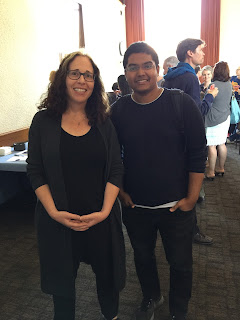EVENT 5: INTERSEX: BEYOND THE BINARY

This was a very different event compared to the others I have attended this quarter. This event was not about art and neither was it about the intersection of art and technology. However, it follows a similar theme, which is the intersection of two contrasting fields. In this case the discussion is focused on the intersex, and how both the social and medicinal worlds play a role in their life. I found this to be a very important event primarily because I found myself terribly under informed about intersex. Although I attribute this partially to my own ignorance but there is also the fact that knowledge regarding intersex is not that common, and there is a need to address this issue. Proof of attendance This event was organized by EPIDAPO, an organization that focuses on the new field of epigenetics, which is the study of changes in organisms due to modification in gene expression. The representative from EPIDAPO, started the discussion by talking about the clinical terminology



